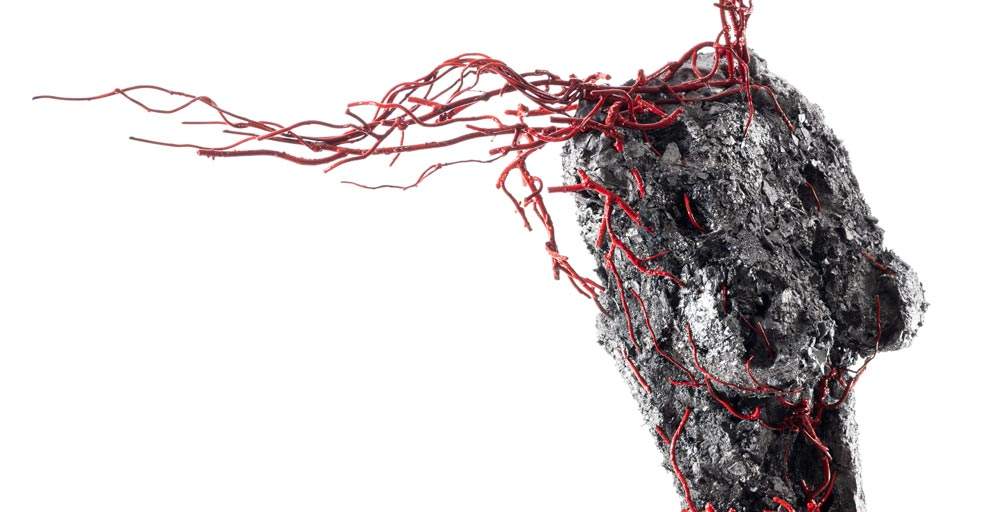Genoa, for the first time Palazzo Nicolosio Lomellino opens up to contemporary art
For the first time, all the sixteenth-century spaces of Palazzo Nicolosio Lomellino in Genoa welcome the intervention of a contemporary artist: it is the exhibition Agapanthus by Francesco Diluca (Milan, 1979), which in fact presents thirty unpublished works, including sculptures and canvases, that feature underwater beauty. A Nature, his, not only resilient, but always prevailing over man. The exhibition, curated by Ernesto Giuntini, a screenwriter and writer, presents to the public from June 2 to July 16 a collection of works specially conceived as a reflection on themes concerning man, science, nature and in particular the sea. Diluca, who has always been attentive to these issues, thus enters into a close relationship with the rooms of the noble residence, which are populated with representations of corals and microorganisms, in a tribute to the beauty of underwater life, but also to the history of the palace and the Lomellino family, engaged in the coral trade in the 16th century.
The curator of the exhibition emphasizes, “Not so much or not only does Diluca’s art force us to rediscover our role in the ecosystem, but he succeeds, through the visionary grammar of the works, in giving us a profound and exciting key to understanding the natural vastness that would be precluded to us as limitedly human, and which instead seems here to open up in all its possibilities.”
In this regard, the iron and copper sculptures in the Rusticles series inspired by the eponymous microorganism-discovered on the wreck of the Titanic in 1986-that feeds on iron oxide, speeding up the corrosion process take on particular significance: a creature that helps restore the natural environment by unexpectedly marking the prevalence of Nature over man. With his language hybridizing anthropomorphic and biomorphic forms, Diluca models fantastic and surreal creatures intended to represent an explosion of color and beauty. Precisely focused on color is the work set up in the garden, titled Agapanthus, dedicated to the flower of the same name, which will bloom in the Palace’s park precisely during the period of the exhibition, known for its unmistakable blue: a site-specific installation that, by taking on the different shades of the plant’s color, tells the story of its life cycle by merging with the context, but also, in some ways, destabilizing it. The chromatic presence of the panels that make up the installation can be admired beyond the end of the exhibition, thus accompanying the flowering time and the decay of the agapanthus flower.
Completing the exhibition is a book-catalogue that, to the themes dear to the artist, adds the work on words conducted by Ernesto Giuntini. The editorial project curated by Flavio Arensi is a journey into the journey, which also in its formal structure recalls the diaries of early 20th century explorers, joining suggestions and references to scientific literature.
The exhibition is realized in collaboration with the Associazione Palazzo Lomellino di Strada Nuova Onlus, which since 2004 in Genoa has been promoting and carrying out the challenging project of recovery and study related to the Palazzo and the discovery of Bernardo Strozzi’s frescoes, actively participating in the cultural life of the city through the use and enhancement of the exceptional and unique spaces with original initiatives of high artistic and cultural content. For info visit the Palazzo Lomellino website.
Image: Francesco Diluca, Kura Halos (2023; mixed media welded iron and scrap metal polyurethane, 208 x 86 x 55 cm)
 |
| Genoa, for the first time Palazzo Nicolosio Lomellino opens up to contemporary art |
Warning: the translation into English of the original Italian article was created using automatic tools. We undertake to review all articles, but we do not guarantee the total absence of inaccuracies in the translation due to the program. You can find the original by clicking on the ITA button. If you find any mistake,please contact us.




























